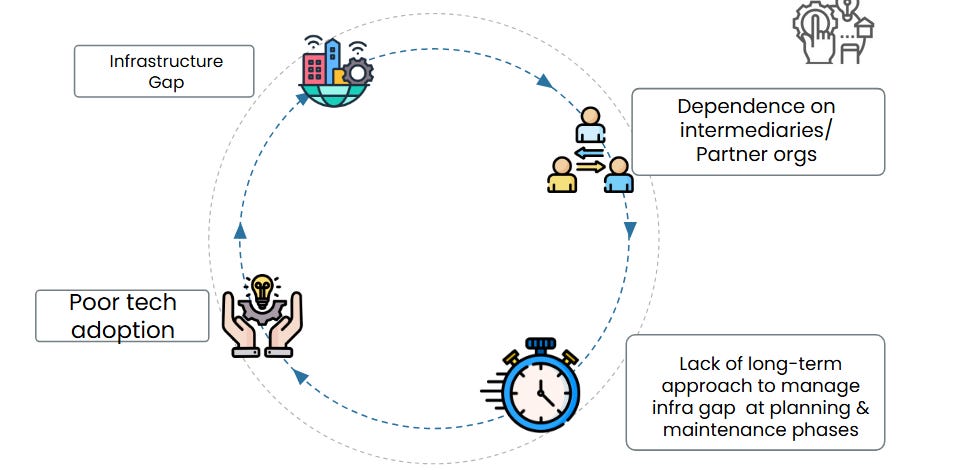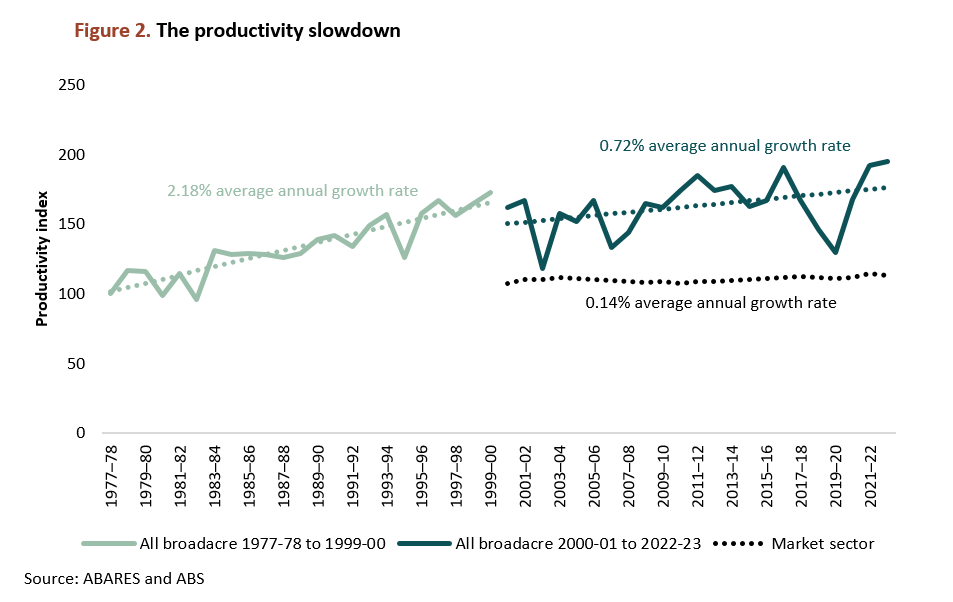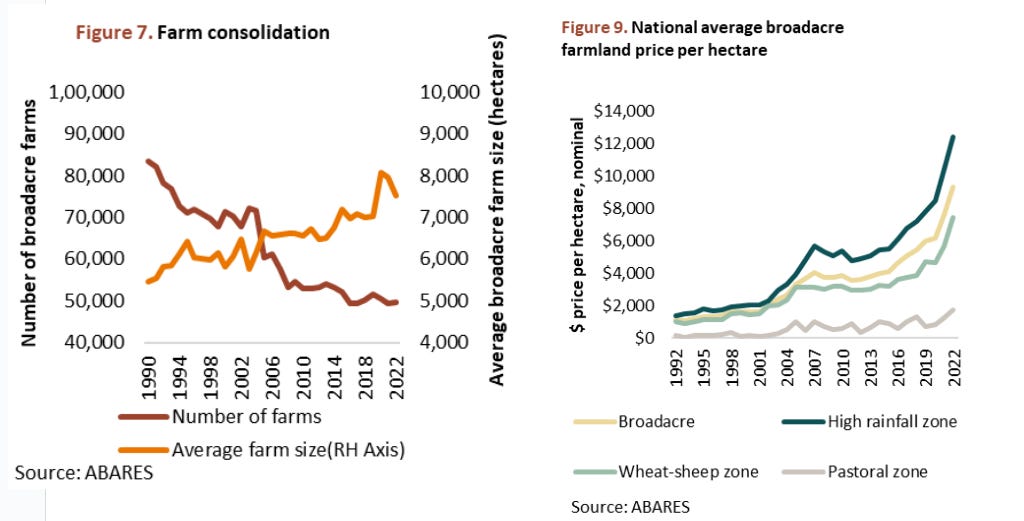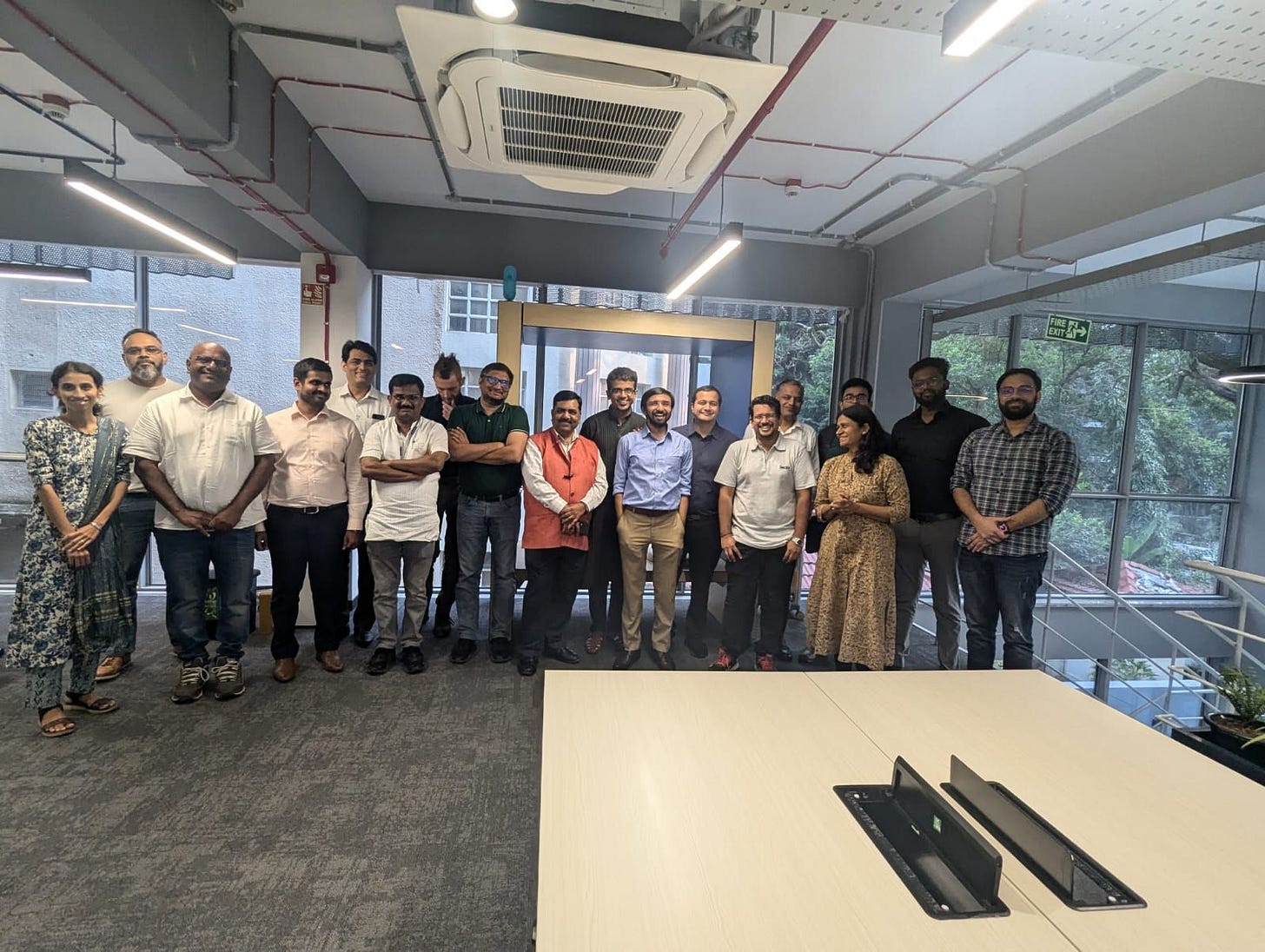The Definition of 'Fast' in Agriculture is Counted in Years
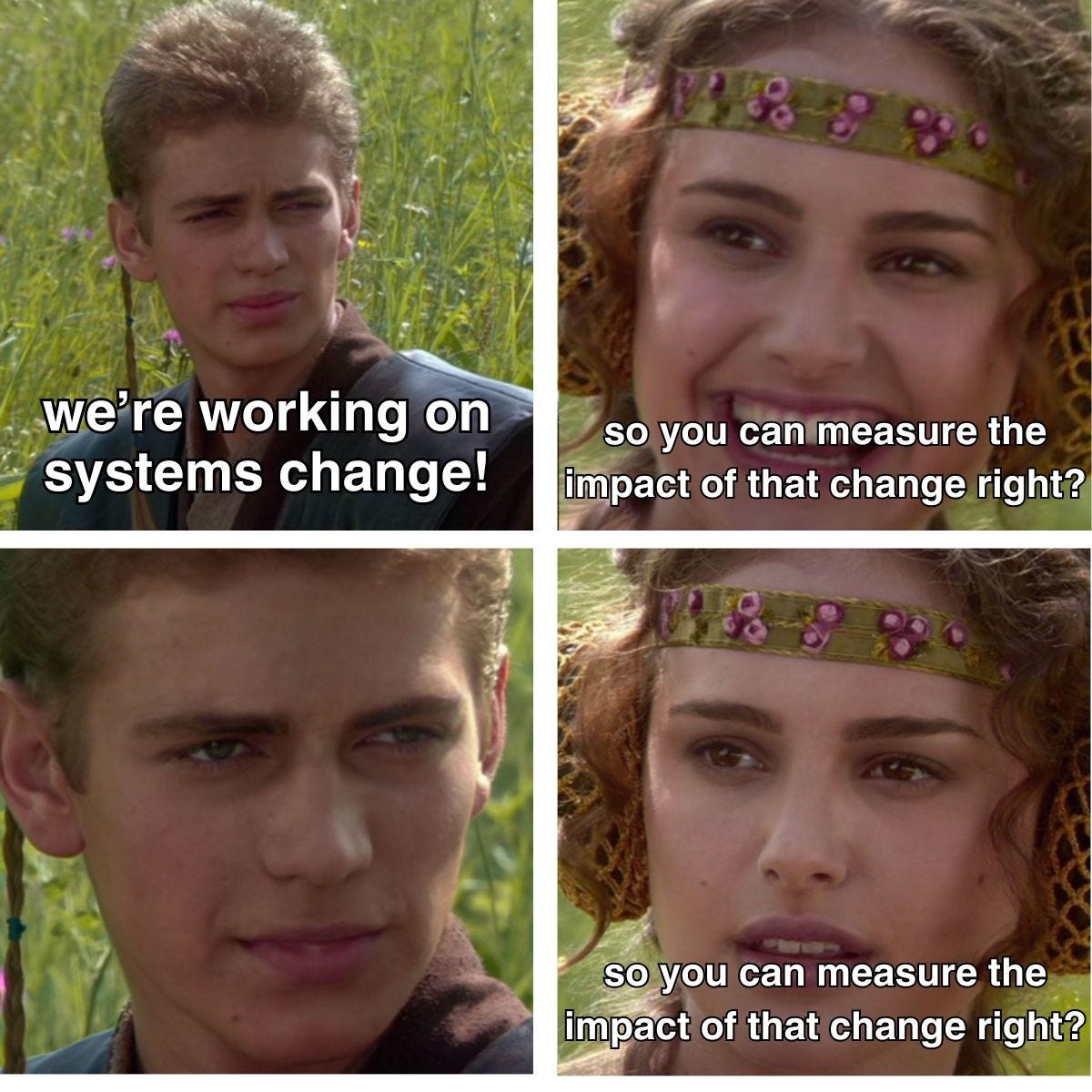
Hello!! My name is Venky and I am eternally grateful for lavishing your attention to Agribusiness Matters, an endeavour to discover systems thinking in the real world - crumbling food and agriculture systems in an age of runaway Climate Change. If you like what you see, I encourage you to subscribe and receive exclusive perks - invitations to join ABM Townhalls, special discounts on ABM Publications, Global Agritech 101, 201 cohort courses and more.
State of Agritech - 1st November 2024
01/ Farmers Don’t Care About Productivity: The Australian Agritech Edition
If you prod me with Peter Thiel’s famous question, “What important truth do few people agree with you on?”, depending on my mood and where we are having this conversation, I might throw a cat among the pigeons with a contrarian truth often known to agritech insiders: Farmers Don’t Care About Productivity.
In a recent private workshop on applying an open-network paradigm to address challenges in Indian Agriculture, I made a laundry list of some of the vexing problems faced by the weakest-link the value chain - farmers. I distilled it down to feudal choke points and the central conundrum: Why do Indian farmers, despite taking the highest risk among everyone else in the value chain, are rewarded in paltry terms? Why are their incomes inversely proportional to the quantum of risk they undertake? Why is production risk deeply undervalued? What open-network use-cases CAN reverse this?
Someone stood up from the audience, unable to process the cognitive dissonance inside his head.
“Why haven’t you spoken about productivity so far”?
“Isn’t it a problem imagined by economists and non-existent for farmers ?” was, well not my response, although I wish I did.
I actually played it subtle and spiced it up with an impish smile, “Arent’ we conflating problems with predicament?”
These mental cobwebs often clutter our mental cortex as we fail to think in second-order terms. We often unconsciously overlay technological adoption with poor productivity and wonder: Why haven’t farmers adopted technology while the real question is why do smallholding farmers get stuck in agritech-development death cycle.
Much to the musical delight of my ears, I discovered
questioning the myopic productivity lens and making some insightful points on “Rethinking AgTech”“The pace of change in agriculture is slower than any other industry, not because farmers aren’t innovative (they are), but because of biology – growing things takes time (1 crop a year for orchardists and most grains farmers). Think of tech as a bacterium that can double its population every 20 minutes (E. coli) and agriculture as a human population that takes 30 years to do the same, In the time it takes us to produce a single generation, E. Coli has produced 788,400 – the faster the doubling time, the faster things evolve. A fail-fast, iterative development mentality simply can’t work when the definition of ‘fast’ in agriculture is counted in years, not hours, days or weeks”.
Hallelujah!!
Phill writes in the context of the Australian agritech ecosystem which is an interesting case-study track in my head on observing what happens when agriculture is run without subsidy and protection guard rails.
“Australia is not the US or Europe. Our climate is drier, our soils less fertile, our markets are deregulated and lack subsidies or protections, and as a result our farming systems are markedly different” - Phill Guthrie
Australian farm productivity growth has slowed significantly since 2000, dropping from 2.18% annual growth in the 1980s-90s to 0.72% between 2000-2023. Although it did outperform the broader market sector, this slowdown threatens Australia's agricultural competitiveness and varies notably across sectors - cropping farms maintained 1.4% growth while beef farms declined by 0.5% annually.
The slowdown stems from multiple factors: climate change impacts, rising land prices, fewer transformative technological developments, and limited scope for further market reforms. Farm size plays a crucial role, with larger operations (>$1M receipts) achieving 1.65% annual growth compared to 0.24% for smaller farms (<$200,000 receipts). This disparity suggests consolidation remains an important pathway for productivity improvement.
Policy recommendations focus on maintaining free markets, supporting R&D investment ($1.3B public funding in 2023), and enabling structural adjustment. Farmers can adapt by diversifying production, adopting new technologies, and focusing on quality over volume. The slowdown particularly matters for Australia's position as a clean, low-emission food producer competing in global markets, where productivity advantages help offset higher labor costs and environmental standards. {FROM ABARES Insights published by Australian Government Department of Agriculture, Fisheries and Forestry)As someone who hasn’t been closely paying attention to Australian Agritech, it was interesting to see the high-level dynamics of Australian Agriculture, especially with increasing land prices and land consolidation driving productivity demands further, creating a productivity treadmill where the barriers for productive farm businesses keep increasing, creating vicious cycle of incentives that might ironically play out in the form of exit policy for Australian farmers to abandon agriculture.
Phill asks an important question in this context - “What’s the cumulative opportunity cost to Australian farmers because potential one or two per-cent gains in productivity and profitability have been ignored, or failed to gain funding because they weren’t considered scalable?”
What is the agritech playbook for ‘smaller, regional AgTech companies that deliver practical, locally grounded innovations’?
In an age of neo-global economies, it might be the most strategic endeavour for the Australian economy.
2/ Marsh Harrier acquires Ahmedabad-based AJA Vision Technologies
Can a barbell strategy work when it comes to branding agritech machinery for mechanizing fruit orchard in smallholding contexts, selling small harvesters that are sold at price points as low as 10K INR vis-a-vis large landholding, vis-a-vis turnkey projects with sophisticated machinery that could go on a higher price range, as high from 20,00,000 to 2Cr INR?
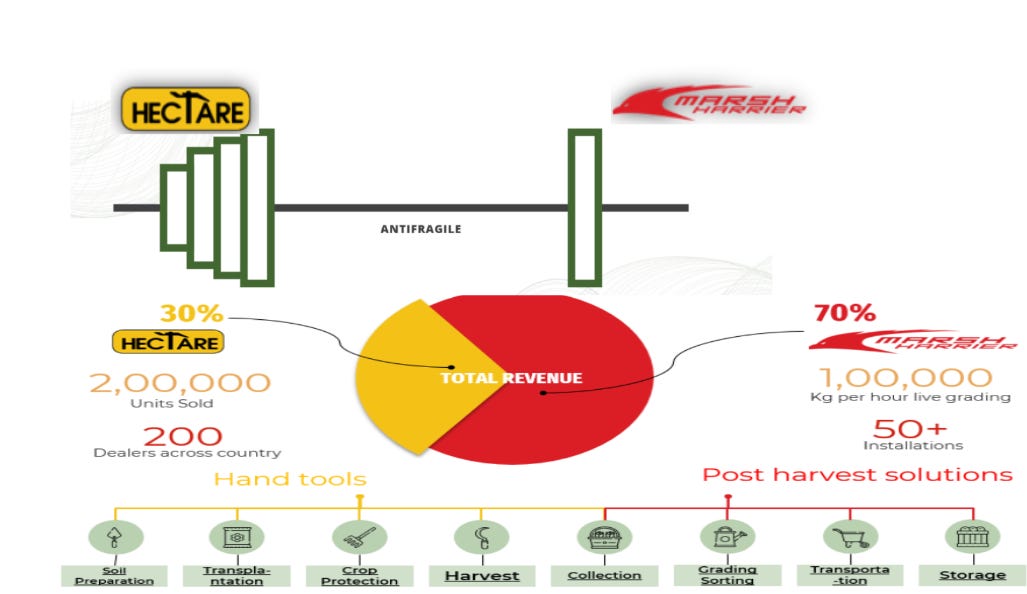
Looking at Sickle Innovations’s growth story, it looks like the barbell strategy is working.
When I chatted with Sickle Innovations CEO Nitin Gupta, he clarified at the outset that, with reported 30 Cr gross sales, he has gone past the phase when they can be called “agritech startup” with a sly dig to several agritech players who continue to play “agritech startup” games.
Marsh Harrier, focusing on apples, citrus and pomegranates, bolstered by this computer vision based acquisition, wants to expand towards mangoes and bananas with plans to provide integrated solutions for grading, sorting and online packing of fruits and vegetables.
It would be interesting to see whether this barbell approach could go beyond branding once data-economies of scale start to become feasible. Can hand tools be reimagined with the help of data? Can integrated solutions move towards rental and sharing models once some of these solutions are deployed at an ecosystemic level with the right set of partnerships?
3/ Update from Unified Community Interface
We hosted the first community anchor call for Unified Agriculture Interface a few days ago in the new FIDE Office in Bangalore. With our network participants (agritech players such Plantix, Amicus Agrotech, Fasal - Grow More, Grow Better™, Fyllo, Carnot Technologies Haqdarshak Krishify FarmRise - Powered By Bayer) joining us both in-person and virtually, the conversation was super insightful in discussing the pathways and roadblocks in the way of building a community-led, hyperlocal open network for our Nashik Pilot.
Our Farmer Engagement team, led by Mahesh Rasal, shared the incredible results of the on-ground farmer engagement activities we have been facilitating for the network participants. These activities span 60 FPOs representing 55 K farmer participants.
These are exciting times figuring out the playbook to build the next wave of ecosystemic agritech innovations that go beyond platform silos and create value for both the farmers and agritech startups.
If you are an agritech startup with a significant presence in Nashik, do reach out, if you wish to be part of the UAI Nashik Pilot.
4/ Underplayed Risks and Chemophobia
Over the past few years, the political battle of paradigms in the world of agriculture is getting more shrill with most of the leading agribusinesses investing heavily in stakeholder relations while figuring out that anything wild, natural or “chemical free” attracts high premium in the market.
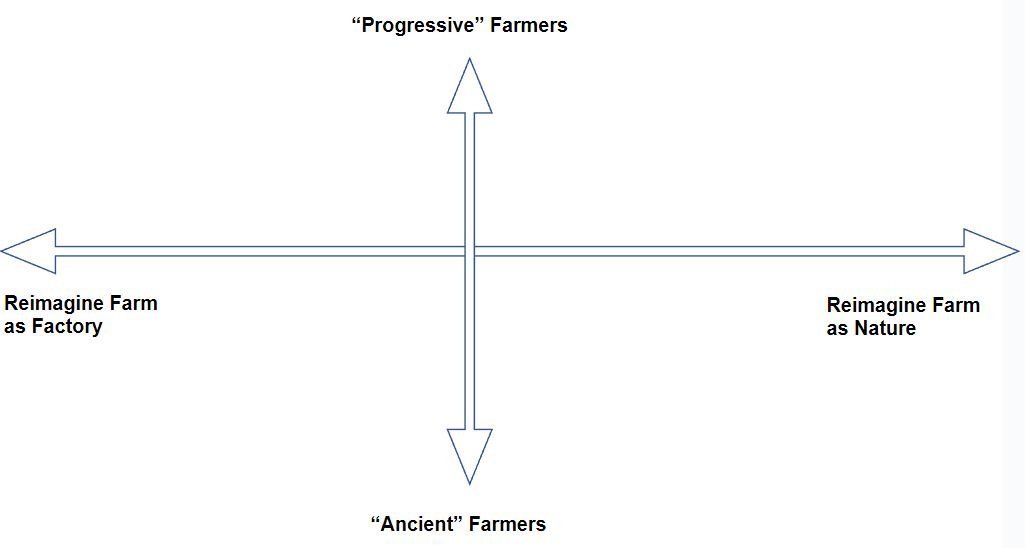
The fascinating specimen in this has to be zero-chemical, residue-free tobacco sold with higher margins amidst promises to be sustainable, traceable and compliant. Earlier, Scandinavia Tobacco Group reported that their net sales increased 4.8% organically driven by Handmade Cigars and Next Generation Products.
Amidst concerns to quell chemophobia, scientists are also discovering that pesticide tests have been myopically focusing on the death of an animal, thereby ignoring important “sublethal” effects.
Abstract: Insect biomass is declining globally, likely driven by climate change and pesticide use, yet systematic studies on the effects of various chemicals remain limited. In this work, we used a chemical library of 1024 molecules—covering insecticides, herbicides, fungicides, and plant growth inhibitors—to assess the impact of sublethal pesticide doses on insects. In Drosophila melanogaster, 57% of chemicals affected larval behavior, and a higher proportion compromised long-term survivability. Exposure to sublethal doses also induced widespread changes in the phosphoproteome and changes in development and reproduction. The negative effects of agrochemicals were amplified when the temperature was increased. We observed similar behavioral changes across multiple insect species, including mosquitoes and butterflies. These findings suggest that widespread sublethal pesticide exposure can alter insect behavior and physiology, threatening long-term population survival. Most chemophobia advocates have been talking about the difference between hazard and risk with the latter dependent only on exposure. Can we upgrade these simplistic mental models if we are serious about moving the needle forward?
So, what do you think?
How happy are you with today’s edition? I would love to get your candid feedback. Your feedback will be anonymous. Two questions. 1 Minute. Thanks.🙏
💗 If you like “Agribusiness Matters”, please click on Like at the bottom and share it with your friend.



